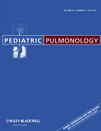Can we use portable nitric oxide analyzer in young children?†
Conflict of interest: No financial or any other potential conflicts of interest exist.
Abstract
Objective
Management of asthma could be improved by measuring exhaled nitric oxide (FENO). Portable hand-held FENO analyzer (NIOX MINO) is practical and small and could be used also in the primary care office. It has demonstrated good repeatability and correlation with stationary device (NIOX) in adults and school aged children, but so far there have been no reports on young children. The aim of this study was to compare conventional chemiluminescence device (NIOX) with a hand-held electrochemical device (NIOX MINO) in young children.
Design
Paired measurements of FENO were performed with the stationary chemiluminescence-based analyzer (NIOX) and with portable electrochemical device (NIOX MINO) in children with asthmatic symptoms and age-matched controls.
Results
Fifty-five children with mean (range) age of 5.7 (3.9–8.5) years were evaluated with both devices. Measurements were successful with both devices in 40 out of 57 children. NIOX MINO was more difficult to use than NIOX in this age group, success rates being 73% and 93%, respectively (P = 0.004). The reproducibility was similar and there was a close correlation between FENO measured by the two devices (r = 0.97, P < 0.001). However, Bland–Altman plot demonstrated limits of agreement that were relatively wide compared to low levels of FENO in the sample. Both devices were sensitive enough to distinguish higher FENO levels in children with asthmatic symptoms, compared to healthy controls.
Conclusions
We conclude that NIOX MINO can be used as a screening tool for the assessment of airway inflammation in children from the age of 4 years, but its applicability is limited by lower measurement success rate and relatively poor accuracy and detection limit at low levels of FENO. Pediatr Pulmonol. 2011; 46:627–631. © 2011 Wiley-Liss, Inc.




